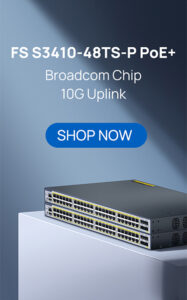NIC, short for network interface card, which can be called network interface controller, network adapter or LAN adapter, allows a networking device to communicate with other networking devices. Without NIC, networking can hardly be done. There are NICs with different types and speeds, such as wireless and wired NIC, from 10G to 100G. Among them, 100G NIC, as a product appearing in recent years, hasn’t taken a large market share yet. This post gives a description of 100G NIC and the trends in NIC as follows.
What Is 100G NIC?
NIC is installed on a computer and used for communicating over a network with another computer, server or other network devices. It comes in many different forms but there are two main different types of NIC: wired NIC and wireless NIC. Wireless NICs use wireless technologies to access the network, while wired NICs use DAC cable or transceiver and fiber patch cable. The most popular wired LAN technology is Ethernet. In terms of its application field, it can be divided into computer NIC card and server NIC card. For client computers, one NIC is needed in most cases. However, for servers, it makes sense to use more than one NIC to meet the demand for handling more network traffic. Generally, one NIC has one network interface, but there are still some server NICs that have two or more interfaces built in a single card.

Figure 1: FS 100G NIC
With the expanding of data center from 10G to 100G, 25G server NIC has gained a firm foothold in the NIC market. In the meantime, the growth in demand for bandwidth is driving data center to higher bandwidth, 200G/400G and 100G transceivers have been widespread, which paves the way for 100G server.
How to Select 100G NIC?
How to choose the best 100G NIC from all the vendors? If you are stuck in this puzzle, see the following section listing recommendations and considerations to consider.
Connector
Connector types like RJ45, LC, FC, SC are commonly used connectors on NIC. You should check the connector type supported by NIC. Today many networks are only using RJ45, so it may be not that hard to choose the NIC for the right connector type as it has been in the past. Even so, some network may utilize a different interface such as coax. Therefore, check if the card you are planning to buy supports this connection before purchasing.
Bus Type
PCI is a hardware bus used for adding internal components to the computer. There are three main PCI bus types used by servers and workstations now: PCI, PCI-X and PCI-E. Among them, PCI is the most conventional one. It has a fixed width of 32 bits and can handle only 5 devices at a time. PCI-X is a higher upgraded version, providing more bandwidth. With the emergence of PCI-E, PCI-X cards are gradually replaced. PCI-E is a serial connection so that devices no longer share bandwidth like they do on a normal bus. Besides, there are different physical sizes of PCI-E card in the market: x16, x8, x4, and x1. Before purchasing a 100G NIC, it is necessary to make sure which PCI version and slot width can be compatible with your current equipment and network environment.
Hot swappable
There are some NICs that can be installed and removed without shutting down the system, which helps minimize downtime by allowing faulty devices to be replaced immediately. While you are choosing your 100G NIC, be sure to check if it supports hot swapping.
Trends in NIC
NICs were commonly used in desktop computers in the 1990s and early 2000s. Up to now, it has been widely used in servers and workstations with different types and rates. With the popularization of wireless networking and WiFi, wireless NICs gradually grows in popularity. However, wired cards are still popular for relatively immobile network devices owing to the reliable connections.NICs have been upgrading for years. As data centers are expanding at an unprecedented pace and driving the need for higher bandwidth between the server and switches, networking is moving from 10G to 25G and even 100G. Companies like Intel and Mellanox have launched their 100G NIC in succession.
During the upgrading from 10G to 100G in data centers, 25G server connectivity popularized for 100G migration can be realized by 4 strands of 25G. 25G NIC is still the mainstream. However, considering the fact that the overall bandwidth for data centers grows quickly and hardware upgrade cycles for data centers occur every two years, the ethernet speed can be faster than we expect. 400G data center is just on the horizon. It stands a good chance that 100G NIC will play an integral role in next-generation 400G networking.
Meanwhile, the need of 100G NIC will drive the demand for other network devices as well. For instance, 100G transceiver, the device between NIC and network, is bound to pervade. Now 100G transceivers are provided by many brands with different types such as CXP, CFP, QSFP28 transceivers,etc. FS supplies a full series of compatible 100G QSFP28 and CFP transceivers that can be matched with the major brand of 100G Ethernet NIC, such as Mellanox and Intel.
Conclusion
Nowadays with the hyping of the next generation cellular technology, 5G, the higher bandwidth is needed for data flow, which paves the way for 100G NIC. On the occasion, 100G transceivers and 400G network switches will be in great need. We believe that the new era of 5G networks will see the popularization of 100G NIC and change towards a new era of network performance.
Article Source: 100G NIC: An Irresistible Trend in Next-Generation 400G Data Center
Related Articles:



